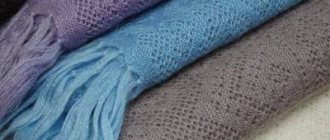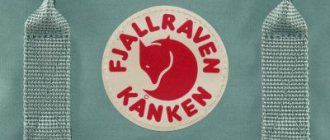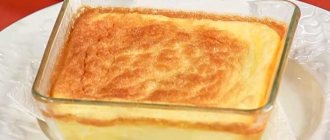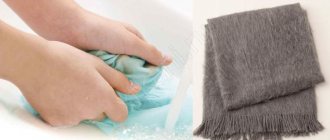A special type of sportswear, without which it is impossible to imagine martial arts training, is a kimono.
This lightweight clothing, made only from natural fabrics, does not restrict movement, is comfortable to wear and resistant to wear.
The secrets of proper washing will help you preserve the original appearance of your clothes longer. We will tell you in the article how to wash a kimono (for judo, karate) in a washing machine and by hand.
Washing secrets
You can wash a kimono either by hand or using a washing machine.
The only thing that, regardless of the choice of washing method, is necessary:
- strictly adhere to the temperature regime (no more than 40C),
- never wash white and colored kimonos together,
- Wring out sportswear as carefully as possible.
Ignoring these simple tips may cause final damage to the product.
In the washing machine
To maintain the shape and density of sportswear, it is necessary to adhere to a clear sequence of machine washing steps:
- Before loading clothes into the washing drum, get rid of stubborn dirt.
- The required temperature is set: for natural fabrics - no more than 35-40C; for sportswear made from mixed fabrics, a temperature of 40-50C is allowed.
- Powder is poured into a special compartment. For white kimonos, use liquid detergent in combination with oxygen bleach. Special powders for colored fabrics are ideal for colored sportswear.
- Set the required washing mode: delicate or synthetic.
- Spin - no more than 500 revolutions (if the kimono is made from mixed fabrics). For natural materials, machine spinning is prohibited (the function is disabled).
- The prepared clothes are carefully folded and loaded into the washing drum (the colored belt is washed separately).
- After washing, sportswear should be immediately taken out and hung to dry.
Hands
Delicate, gentle hand washing will help quickly return the kimono to purity and freshness without compromising the shape and color of the product.
Algorithm of actions:
a basin or bathtub is filled with warm water (temperature no higher than 40C), liquid detergent or powder is added;- a dirty kimono is turned inside out and immersed in a soapy solution for several hours;
- then wash the product with gentle, squeezing movements, paying special attention to the fabric on the collar, cuffs and armpits;
- the washed product is thoroughly rinsed two or three times until the soap solution is completely removed from the fabric;
- The kimono is carefully wrung out and hung out to dry.
Do I need to soak?
If sportswear is very dirty, it should be soaked before the main wash.
The colored kimono is immersed in warm water (room temperature) for one and a half to two hours. To better remove dirt, add a few tablespoons of laundry soap shavings to the water.
White sportswear is soaked for half an hour in a soda solution (2 tablespoons of soda are dissolved in 10 liters of water).
Key points when washing a kimono
Despite the fact that ultimately the quality of a kimono for aikido, judo and karate depends on the approach used by the manufacturer, the rules for washing the product in a washing machine are the same in all cases:
- First, read the label with recommendations for caring for the kimono. If the product is made of pure cotton, then most likely the manufacturer will recommend washing at a temperature no higher than 30ºC. If higher temperatures are allowed, then most likely synthetics have been added to the fibers.
- The tendency of cotton kimonos to shrink can be used to adjust a large garment to fit your size. The higher the washing water temperature, the greater the shrinkage. Cotton can withstand processing at 90ºС. The more procedures, the stronger the tissue shrinkage.
- It should be taken into account that kimono material does not shrink equally in all directions; the final result depends on the type of thread arrangement. For example, jackets for aikido, karate and judo shrink more in width than in length.
- You can wash a kimono belt along with the main item only if it is the same color. In this case, it must be placed in a net or pillowcase.
Despite the fact that high temperature allows you to adjust the kimono to size and helps destroy germs, this approach should not be abused. Hot water accelerates the destruction of cotton fibers, which leads to rapid wear of the fabric.
We recommend: Balls for washing down jackets - pros and cons
How to clean a belt?
An integral part of a martial arts fighter's costume is a belt. Depending on the level of skill, a belt of a certain color is selected.
You should not ignore belt care , since a dirty element of the costume against the backdrop of a snow-white kimono spoils the overall impression of the fighter’s appearance.
The easiest way to wash a white belt is. It is placed in a special net (or pillowcase) and loaded into the drum of the washing machine along with the kimono.
Colored belts are washed according to the following scheme:
Warm water (no more than 40C) is poured into a basin and powder or liquid detergent for colored fabrics is added.- The belt is immersed in a soapy solution and left to soak for ten to fifteen minutes.
- Afterwards, the belt is thoroughly wrinkled, and if necessary, especially contaminated areas are treated with a brush and laundry soap.
- The washed belt is rinsed in clean running water and hung out to dry.
Bleaching the kimono and belt at the same time. This will help avoid a situation where individual parts of one martial arts suit differ in shade.
What are the nuances of washing a kimono at home?
The rules for washing using modern technology are the same for any clothing intended for laundry care.
These include:
- First, you need to read the label, which contains the rules for careful care of the product. If it is made from natural and 100% cotton, it is recommended to wash and bleach the kimono at 30 degrees. If a high temperature is allowed when washing a white kimono, it means that the sportswear is made not only from cotton, but also from additional fibers, for example, synthetics.
- If the clothes are too large, they can be reduced to your size when washed. How many washes your sportswear will need depends on the size of the item. In total, the clothes can withstand temperatures of 90 degrees.
- It is important to note that a karate kimono can stretch unequally - this means that the fabrics stretch differently, gradually greatly changing the shape of the product. For example, the top part of things shrinks faster than the bottom part.
- The belt from the product can be washed with clothes only if it is similar in color to the fabric. Otherwise, it should be placed in a pillowcase or a special mesh for washing things. The same must be done if you are going to bleach your suit.
Although high temperatures can reduce the size and fit strictly to the figure, as well as destroy harmful bacteria, you should not often wash the product in hot water. It causes the destruction of cotton fibers, which ultimately leads to instant disintegration of the fabric.
How to remove various stains?
The recipe for getting rid of it depends on the type of stain itself.
- will help remove sweat stains from colored fabrics It is enough to soak the dirty item in the prepared solution and leave for half an hour. Afterwards the product is washed in the usual way.
- Hydrogen peroxide will help remove blood stains from a white It is enough to moisten the stain generously with peroxide, wait until the reaction occurs, and remove the stain with a cotton sponge.
- Laundry soap will help get rid of grass stains Rub the dirt with soap and leave it alone for ten to fifteen minutes. Afterwards the clothes are washed in the main mode.
- Hydrogen peroxide and ammonia (mix in equal proportions) will help get rid of yellow spots The resulting solution is diluted in water (3-4 spoons per 10 liters), in which the kimono is soaked. After an hour, the clothes are washed as usual.
- If a rust stain appears on a white item after washing , lemon will help remove it. You need to wrap a piece of lemon in gauze and a paper napkin, apply it to the stain and press with a hot iron.
How to return the color?
You can return the original whiteness and freshness in the following ways:
Lather the fabric with laundry soap and leave the clothes alone for two hours. The product can then be washed as usual.- Deciduous wood ash is an excellent folk remedy for bleaching natural cotton and linen.
The ash is poured into a gauze bag and placed in the drum of the washing machine along with dirty clothes. - A saline solution will help quickly restore the whiteness of a cotton kimono. In 10 liters of oxen, dissolve 2 tablespoons of salt, and place the product in the resulting solution for half an hour. Afterwards, the clothes are washed in the usual way.
- A solution of hydrogen peroxide (2 tbsp), ammonia (1 tbsp) and water (10 l) helps to cope not only with the gray tint of a washed item, but also with old stains. The kimono is immersed in the prepared solution, left for forty minutes, after which it is washed by hand or in a machine.
The basic rule that must be remembered in order to avoid final damage to the product: a kimono that has lost its whiteness cannot be bleached with products containing chlorine. The result of such actions will be an even grayer fabric of the product.
How to remove the smell?
A kimono soaked in sweat begins to smell unpleasant. One proven method will help remove the smell of sweat: just soak the clothes in water with vinegar (2 tablespoons of vinegar per 10 liters of water). After soaking, the clothes are thoroughly rinsed and hung out to dry.
The following recommendations will help minimize the appearance of unpleasant odors:
- after each workout, the kimono must be removed from the bag and laid out to dry;
- after each workout, clothes must be rinsed under running, cool water;
- Drying in the cold will help quickly get rid of the unpleasant odor of sweat, even without washing.
How to dry?
It is strictly forbidden to dry a kimono made from natural fabrics in an automatic machine, twist it too much, or stretch it. From such actions, the fabric stretches and loses its shape and original appearance.
Basic drying rules:
Immediately after machine washing, clothes must be removed from the drum and hung out to dry.
Delay can lead to the formation of creases and folds on the fabric, which will be very difficult to get rid of. Also, leaving a damp kimono in the washing machine for a long time can cause a very unpleasant, musty odor to appear, which can only be removed by repeated washing.- Wet clothes are gently shaken and hung out to dry in the open air, in a dark, well-ventilated place.
- It is forbidden to dry a kimono on a radiator or near an open fire.
Sportswear made from natural fabrics takes a long time to dry, so you should be patient and have a second set of replacement uniforms for training.
Rules for washing and drying kimonos
So, can you wash a kimono in a washing machine? Yes, if you follow certain recommendations:
- The suit must be pre-prepared before washing. To do this, turn it inside out, straighten the resulting folds, and level it out. It is forbidden to wash the kimono together with the belt, because it will fade;
- the suit is carefully rolled up and placed in the washing machine;
- the operating mode corresponding to washing cotton products is selected, the water temperature is set to thirty degrees, and the detergent is added. By the way, the washing temperature can be set to ninety degrees, but the percentage of fabric shrinkage greatly increases. This property will be useful if you purchase a larger suit and the kimono needs to be reduced. But the standard solution is a thirty-degree mode!
- the washing process is activated. Once completed, the kimono is removed from the washing machine.
Kimonos should be washed for at least one and a half hours. This time will be enough to remove all dirt from the pile of cotton threads. If the washing cycle is short, only surface dirt is removed.
The product is wrung out in the machine at medium power, since it is then difficult to get rid of the resulting wrinkles. After washing the kimono, it is removed from the drum, hung on hangers, and the folds are straightened out. Drying should be done outside or on an open balcony to ensure fresh air. The use of heating devices is prohibited.
Please note that cotton fabric has good density and therefore takes a long time to dry. If the product has a smooth texture, it can be ironed. Braided clothing is simply carefully straightened by hand.
After washing with the right detergent and drying, your kimono will be wrinkle-free. If large folds remain after drying, it is best to wet the suit and dry it again.
Adviсe
Recommendations for caring for the product are as follows:
- It is strictly forbidden to wash kimonos in hot water. When exposed to high temperatures, the product may shrink in size.
- Adding conditioner to the water during rinsing will help make the fabric soft and pleasant to the touch.
- Do not soak a kimono in hot water. Under the influence of high temperatures, dirt is further absorbed into the fibers of the fabric, and sportswear takes on a gray tint and a washed-out appearance.
- Regardless of the composition of the fabric, automatic drying for kimonos is not acceptable.
You will find maximum useful information about washing clothes and various fabric products here.
Methods for removing stains and eliminating unpleasant odors
Athletes who initially purchase expensive kimono options enjoy the whiteness of their equipment for a long time. Cheaper models acquire a grayish or yellowish tint after some time, even if they are cared for according to all the rules. It’s just that in the first case the fabric is initially bleached, and in the second you have to do it yourself. If you find stubborn stains that cannot even be bleached, you must contact a dry cleaner.
The process of bleaching cotton involves the use of special substances that increase the alkalinity of the washing composition. This leads to the destruction of fats, which are the cause of specific contaminants that give the fabric an unnecessary shade. Cellulose, which is the basis of cotton, is not very susceptible to such effects, so properly carried out bleaching will not negatively affect the condition of the material. Here you just need to choose products that do not contain chlorine. This element can weaken fabric fibers.
We recommend: “Cold wash” mode in a washing machine – a useful option or a marketing ploy?
In addition to stains, kimonos often become a source of unpleasant odors. This will not happen if you remember the following points:
- After training, the kimono must be dried as quickly as possible; it must not be left in the bag.
- If possible, after each lesson, it is recommended to rinse the product in cold water and dry it in the fresh air.
- If the smell does appear, then before rinsing you need to add about two tablespoons of vinegar to cold water.
- When washing things in a machine, you need to use powders with fragrances, softeners and conditioners with fragrances.
- During the winter months, kimonos can be regularly hung out in the cold.
If the product does not shrink when washed in hot water, then it is better to process it at a temperature of about 65ºC. This will destroy most of the bacteria that cause the unpleasant odor.











